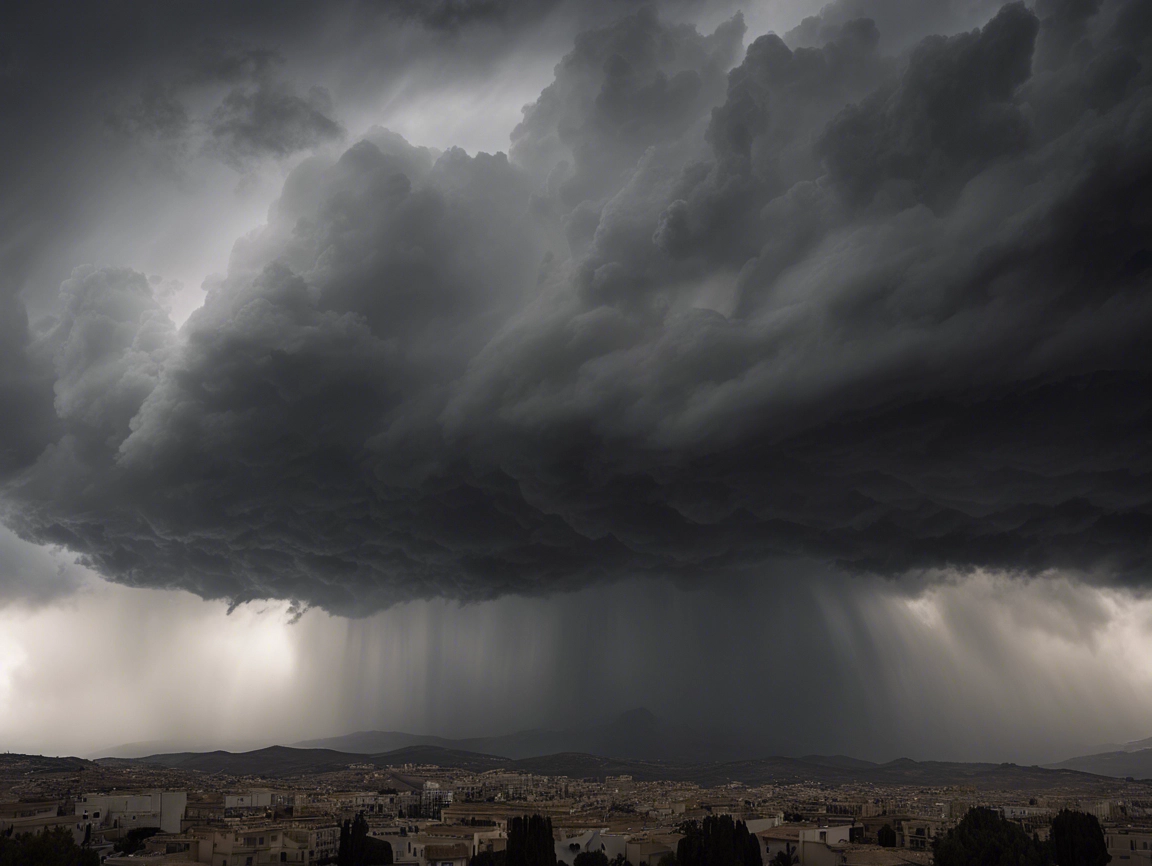From a meteorological point of view – how a DANA is formed and how it affects climate change.
The acronym DANA stands for Depresión Aislada en Niveles Altos (Isolated High Level Depression). An atmospheric depression is an area where the pressure is low and the wind circulates counterclockwise, getting stronger and stronger. When this occurs at the surface, for example, it can cause squalls and strong gusts of wind.
When a DANA appears, a mass of cold air is formed at high altitude, nearing 9,000 metres, and the intensity of the wind in these air masses can cause an isolated depression. Hence the acronym. In summary, a DANA forms at high levels when a large polar air mass is in circulation and a trough is formed.
Despite its development at very high altitudes, the DANA can affect the ground below and other areas of the atmosphere, and when it collides with a warmer air mass, such as those we have in the Mediterranean, is when the phenomena originates.
DANAs, or cold drops, as they are popularly known, usually form in late summer and early autumn, as this is when sea temperatures are at their highest and, as we have said, the cold air mass needs to collide with a warmer one to cause rain, storms and strong winds.
Does climate change have something to do with it?
Yes and no. Although these types of phenomena are not new and have always happened, it is now, when water temperatures are higher, that they are generated more and with more intensity.
Therefore, the effects of climate change are beginning to be felt, since, although this latest DANA has not been caused by it alone, the increase in temperatures has made it worse and the rains have been more torrential and devastating.
History and geography of Valencia: why have some areas been flooded and others not?

The geographical situation of Valencia, in a plain with a river mouth, makes it an area prone to flooding.
Last Tuesday was the strongest day, when DANA passed through Valencia. AEMET, the State Meteorological Agency, warned that the weather emergency was not over.
In one of their official communications on the social network X, formerly Twitter, they explained that the worst consequences of the floods had not been in areas where it has rained, but in flood zones.
At the same time, the periphery of Valencia was covered with water, while the centre of the city seemed to be saved from flooding. Below,is an explanation as to why this phenomenon occurred and the importance of a good urban system that is able to cope with these catastrophes .
We first have to understand the history of the city. Valencia, before being a Roman city, already had population settlements. Its location, close to the sea and at the mouth of the Turia River, was a perfect enclave for the development of society and trade.
However, despite the fertility of the land in these areas, rainfall can cause these rivers to flow into the sea. Moreover, in the specific case of Valencia, it is built on an alluvial plain, making it an area with a high risk of flooding.
Finally, when the riverbed of a river is full due to heavy rains and coincides with a sea storm, as has happened this week, the river water cannot flow properly into the sea, as the waves prevent it.
So we have a double combination that makes Valencia prone to flooding: the mouth of the Turia and its geographical location. That is why, as AEMET warned, the areas where it rained the most have not been flooded, but those whose geography is more predisposed to accumulate water, which in some cases has coincided with heavy rains, but not in others.
The periphery flooded, the centre of Valencia safe. What happened?

The 2024 DANA was not the first catastrophic event in recent years. Seventy years ago, in 1957, after an episode of heavy rains, the Turia River overflowed its banks into the sea. That is, in the city of Valencia. This episode is known as the Great Flood of 1957.
The flood caused a real chaos and there were dozens of material and human losses. To prevent this from happening again, Plan Sur was implemented. Its objective was to divert the Turia riverbed to avoid future tragedies. So a new riverbed was built that, instead of crossing the city, surrounded it. Now, where the river used to flow, there is a park, the Turia Garden, which was founded in 1986.
In this way, the city of Valencia was protected from possible future floods, but the peripheral municipalities were not allocated such a large investment and, therefore, have suffered more from the consequences of the DANA .
Financial Contributions to Red Cross and Cáritas
If you’d like to contribute financially, both the Red Cross and Cáritas in Valencia are accepting donations:
Red Cross Valencia
Phone donations: 900 1049 71
Bizum code: 33512
SMS donations: Send «AYUDA» to 38092
Cáritas Valencia
Bank Account: ES02 2100 8734 6113 0064 8236
Online: Cáritas Valencia’s Website (for DANA relief)
Source: https://valenciasecreta.com/

